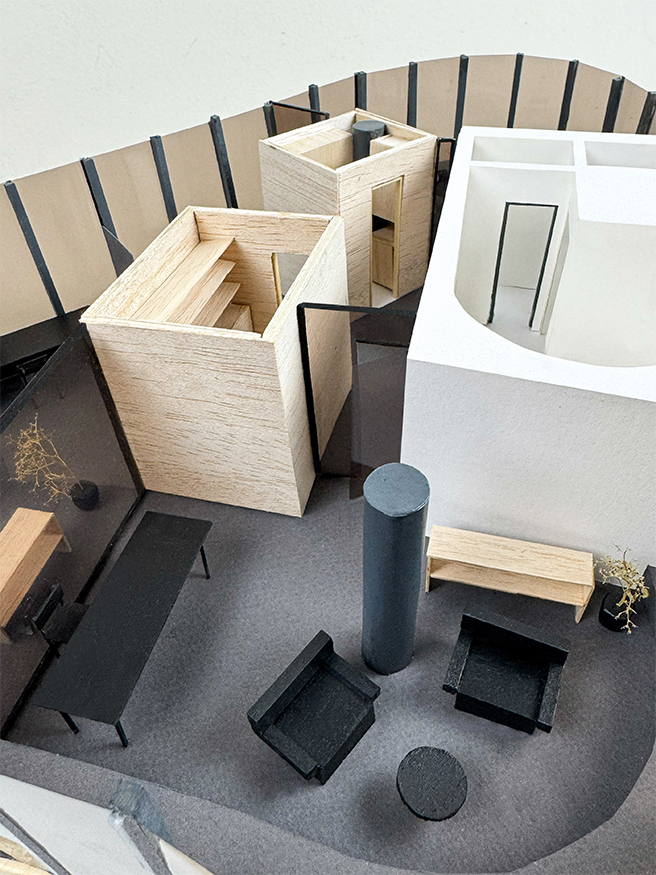V. Pantziou, L. Christodoulou
The office renovation project presented challenges from the outset due to the space being part of a significant building designed by Ioannis Vikelas, in the northern suburbs of Athens. This office building, situated on Ethnikis Antistaseos Street in Chalandri, build in 1979, features a curved, sculptural mass entirely clad in glass, floating 2.5 meters above the ground. As a result, its interior mirrors the building’s organic, flowing shape.

The glass facade provides expansive views of a small park across the street, as well as the EDOK ETER office building, another work by the same architect. Surrounded by trees and greenery, the building integrates the city’s natural atmosphere into its interior, despite lacking direct access to outdoor spaces. Except for the enclosed staircase and sanitary facilities, the layout is predominantly open, allowing the building’s shape to be perceived from within.

The main objective of the design was to preserve the open-plan layout and fluid spatial experience while accommodating diverse functional needs. This led to the creation of two floating interior boxes: one serving as an office kitchen and the other as a small warehouse. These elements define the placement of the main office, the open workspace, and the meeting room. By detaching these boxes from the enclosed staircase and using glass partitions to separate spaces, the design ensures a cohesive spatial experience.

To emphasize the presence of the surrounding greenery, the interior employs dark grey hues for most materials, with the exception of the two floating boxes that are clad in warm wood, adding a touch of warmth to the space. The dark tones minimize visual obstructions to the exterior views and create a sense of visual tranquility, even under the bright Athenian sunlight.










